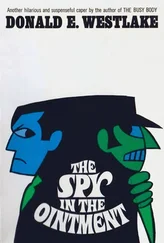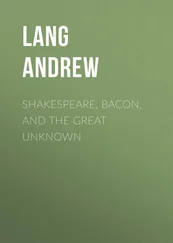Andrew Lang - Pickle the Spy; Or, the Incognito of Prince Charles
Здесь есть возможность читать онлайн «Andrew Lang - Pickle the Spy; Or, the Incognito of Prince Charles» — ознакомительный отрывок электронной книги совершенно бесплатно, а после прочтения отрывка купить полную версию. В некоторых случаях можно слушать аудио, скачать через торрент в формате fb2 и присутствует краткое содержание. Жанр: foreign_antique, foreign_prose, на английском языке. Описание произведения, (предисловие) а так же отзывы посетителей доступны на портале библиотеки ЛибКат.
- Название:Pickle the Spy; Or, the Incognito of Prince Charles
- Автор:
- Жанр:
- Год:неизвестен
- ISBN:нет данных
- Рейтинг книги:4 / 5. Голосов: 1
-
Избранное:Добавить в избранное
- Отзывы:
-
Ваша оценка:
- 80
- 1
- 2
- 3
- 4
- 5
Pickle the Spy; Or, the Incognito of Prince Charles: краткое содержание, описание и аннотация
Предлагаем к чтению аннотацию, описание, краткое содержание или предисловие (зависит от того, что написал сам автор книги «Pickle the Spy; Or, the Incognito of Prince Charles»). Если вы не нашли необходимую информацию о книге — напишите в комментариях, мы постараемся отыскать её.
Pickle the Spy; Or, the Incognito of Prince Charles — читать онлайн ознакомительный отрывок
Ниже представлен текст книги, разбитый по страницам. Система сохранения места последней прочитанной страницы, позволяет с удобством читать онлайн бесплатно книгу «Pickle the Spy; Or, the Incognito of Prince Charles», без необходимости каждый раз заново искать на чём Вы остановились. Поставьте закладку, и сможете в любой момент перейти на страницу, на которой закончили чтение.
Интервал:
Закладка:
Ours is a strange and melancholy tale of desperate loyalties, and of a treason almost unparalleled for secrecy and persistence. We have to do with the back-stairs of diplomacy, with spies and traitors, with cloak and sword, with blabbing servants, and inquisitive ambassadors, with disguise and discovery, with friends more staunch than steel, or weaker than water, with petty jealousies, with the relentless persecution of a brave man, and with the consequent ruin of a gallant life.
To understand the psychological problem, the degradation of a promising personality, it is necessary to glance rapidly at what we know of Charles before his Scottish expedition.
To begin at the beginning, in physical qualities the Prince was dowered by a kind fairy. He was firmly though slimly built, of the best stature for strength and health. ‘He had a body made for war,’ writes Lord Elcho, who hated him. The gift of beauty (in his case peculiarly fatal, as will be seen) had not been denied to him. His brow was high and broad, his nose shapely, his eyes of a rich dark brown, his hair of a chestnut hue, golden at the tips. Though his eyes are described as blue, both in 1744 by Sir Horace Mann, and in later life (1770) by an English lady in Rome, though Lord Stanhope and Mr. Stevenson agree in this error, brown was really their colour. 5 5 Letters from Italy by an Englishwoman , ii. 198. London 1776. Cited by Lord Stanhope, iii. 556. Horace Mann to the Duke of Newcastle. State Papers. Tuscany. Jan. ½½, 174¾. In Ewald, i. 87. Both authorities speak of blue eyes.
Charles inherited the dark eyes of his father, ‘the Black Bird,’ and of Mary Stuart. This is manifest from all the original portraits and miniatures, including that given by the Prince to his secretary, Murray of Broughton, now in my collection. In boyhood Charles’s face had a merry, mutinous, rather reckless expression, as portraits prove. Hundreds of faces like his may be seen at the public schools; indeed, Charles had many ‘doubles,’ who sometimes traded on the resemblance, sometimes, wittingly or unwittingly, misled the spies that constantly pursued him. 6 6 A false Charles appeared in Selkirkshire in 1745. See Mr. Craig Brown’s History of Ettrick Forest . The French, in 1759, meant to send a false Charles to Ireland with Thurot. Another appeared at Civita Vecchia about 1752. The tradition of Roderick Mackenzie, who died under English bullets, crying ‘You have slain your Prince,’ is familiar. We shall meet other pseudo-Charles’s.
His adherents fondly declared that his natural air of distinction, his princely bearing, were too marked to be concealed in any travesty. Yet no man has, in disguises of his person, been more successful. We may grant ‘the grand air’ to Charles, but we must admit that he could successfully dissemble it.
About 1743, when a number of miniatures of the Prince were done in Italy for presentation to adherents, Charles’s boyish mirth, as seen in these works of art, has become somewhat petulant, if not arrogant, but he is still ‘a lad with the bloom of a lass.’ A shade of aspiring melancholy marks a portrait done in France, just before the expedition to Scotland. Le Toque’s fine portrait of the Prince in armour (1748) shows a manly and martial but rather sinister countenance. A plaster bust, done from a life mask, if not from Le Moine’s bust in marble (1750), was thought the best likeness by Dr. King. This bust was openly sold in Red Lion Square, and, when Charles visited Dr. King in September 1750, the Doctor’s servant observed the resemblance. I have never seen a copy of this bust, and the medal struck in 1750, an intaglio of the same date, and a very rare profile in the collection of the Duke of Atholl, give a similar idea of the Prince as he was at thirty. A distinguished artist, who outlined Charles’s profile and applied it to another of Her present Majesty in youth, tells me that they are almost exact counterparts.
Next we come to the angry eyes and swollen features of Ozias Humphreys’s miniature, in the Duke of Atholl’s collection, and in his sketch published in the ‘Lockhart Papers’ (1776), and, finally, to the fallen weary old face designed by Gavin Hamilton. Charles’s younger brother, Henry, Duke of York, was a prettier boy, but it is curious to mark the prematurely priestly and ‘Italianate’ expression of the Duke in youth, while Charles still seems a merry lad. Of Charles in boyhood many anecdotes are told. At the age of two or three he is said to have been taken to see the Pope in his garden, and to have refused the usual marks of reverence. Walton, the English agent in Florence, reports an outbreak of ferocious temper in 1733. 7 7 Ewald, i. 41.
Though based on gossip, the story seems to forebode the later excesses of anger. Earlier, in 1727, the Duc de Liria, a son of Marshal Berwick, draws a pretty picture of the child when about seven years old: —
‘The King of England did not wish me to leave before May 4, and I was only too happy to remain at his feet, not merely on account of the love and respect I have borne him all my life, but also because I was never weary of watching the Princes, his sons. The Prince of Wales was now six and a half, and, besides his great beauty, was remarkable for dexterity, grace, and almost supernatural cleverness. Not only could he read fluently, but he knew the doctrines of the Christian faith as well as the master who had taught him. He could ride; could fire a gun; and, more surprising still, I have seen him take a crossbow and kill birds on the roof, and split a rolling ball with a shaft, ten times in succession. He speaks English, French, and Italian perfectly, and altogether he is the most ideal Prince I have ever met in the course of my life.
‘The Duke of York, His Majesty’s second son, is two years old, and a prodigy of beauty and strength.’ 8 8 Documentos Ineditos . Madrid. 1889. Vol. xciii. 18.
Gray, certainly no Jacobite, when at Rome with Horace Walpole speaks very kindly of the two gay young Princes. He sneers at their melancholy father, of whom Montesquieu writes, ‘ ce Prince a une bonne physiononie et noble . Il paroit triste , pieux .’ 9 9 Voyages de Montesquieu . Bordeaux, 1894. p. 250.
Young Charles was neither pious nor melancholy.
Of Charles at the age of twenty, the President de Brosses (the author of ‘Les Dieux Fétiches’) speaks as an unconcerned observer. ‘I hear from those who know them both thoroughly that the eldest has far higher worth, and is much more beloved by his friends; that he has a kind heart and a high courage; that he feels warmly for his family’s misfortunes, and that if some day he does not retrieve them, it will not be for want of intrepidity.’ 10 10 Letters of De Brosses , as translated by Lord Stanhope, iii. 72.
Charles’s gallantry when under fire as a mere boy, at the siege of Gaeta (1734), was, indeed, greatly admired and generally extolled. 11 11 See authorities in Ewald, i. 48–50.
His courage has been much more foolishly denied by his enemies than too eagerly applauded by friends who had seen him tried by every species of danger.
Aspersions have been thrown on Charles’s personal bravery; it may be worth while to comment on them. The story of Lord Elcho’s reproaching the Prince for not heading a charge of the second line at Culloden, has unluckily been circulated by Sir Walter Scott. On February 9, 1826, Scott met Sir James Stuart Denham, whose father was out in the Forty-five, and whose uncle was the Lord Elcho of that date. Lord Elcho wrote memoirs, still unpublished, but used by Mr. Ewald in his ‘Life of the Prince.’ Elcho is a hostile witness: for twenty years he vainly dunned Charles for a debt of 1,500 l. According to Sir James Stuart Denham, Elcho asked Charles to lead a final charge at Culloden, retrieve the battle, or die sword in hand. The Prince rode off the field, Elcho calling him ‘a damned, cowardly Italian – .’
Читать дальшеИнтервал:
Закладка:
Похожие книги на «Pickle the Spy; Or, the Incognito of Prince Charles»
Представляем Вашему вниманию похожие книги на «Pickle the Spy; Or, the Incognito of Prince Charles» списком для выбора. Мы отобрали схожую по названию и смыслу литературу в надежде предоставить читателям больше вариантов отыскать новые, интересные, ещё непрочитанные произведения.
Обсуждение, отзывы о книге «Pickle the Spy; Or, the Incognito of Prince Charles» и просто собственные мнения читателей. Оставьте ваши комментарии, напишите, что Вы думаете о произведении, его смысле или главных героях. Укажите что конкретно понравилось, а что нет, и почему Вы так считаете.












